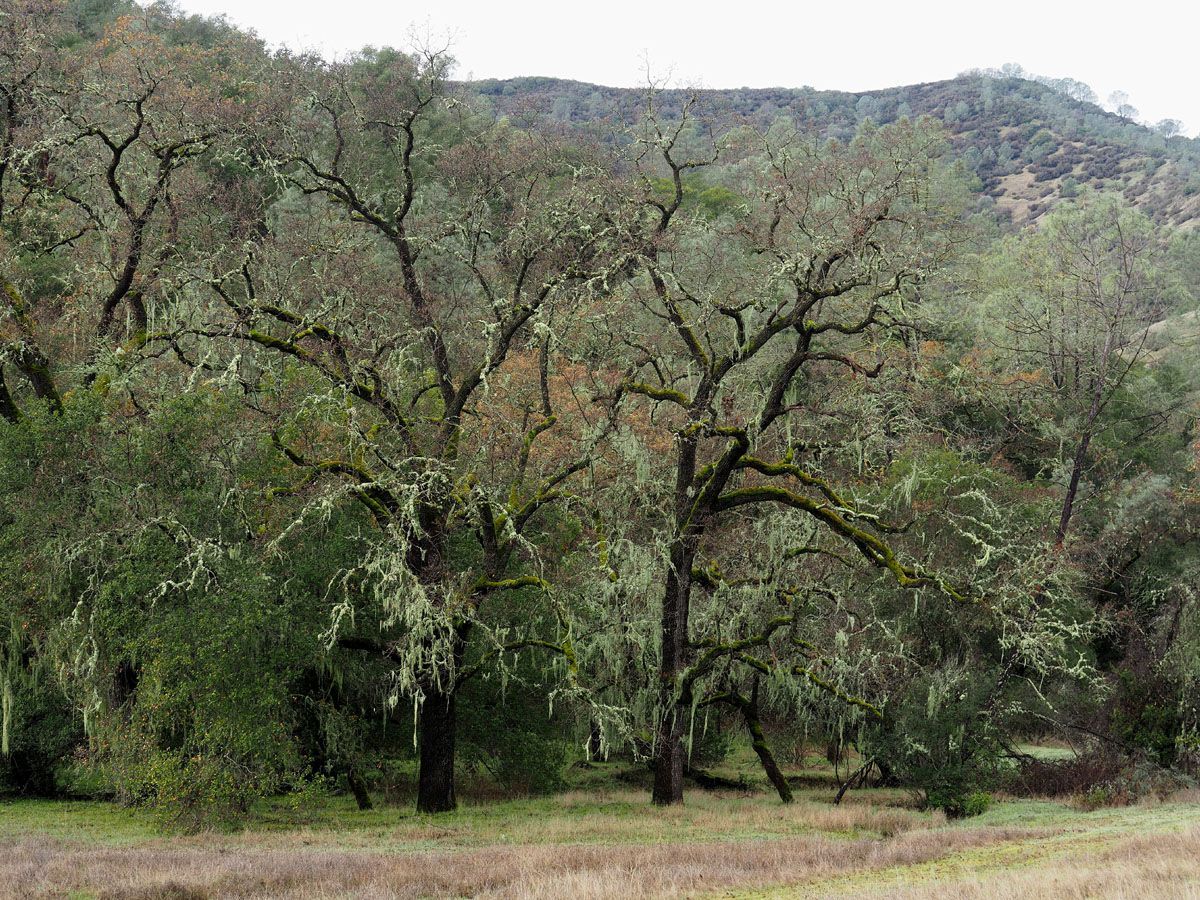Monumental Questions - Tell me More About Cedar Roughs Wilderness

Oak woodlands dominate the lower elevations of Cedar Roughs Wilderness before transitioning to chaparral at higher elevations. (Photo by K. Nguyen)
Berryessa Snow Mountain National Monument includes three wilderness areas – Snow Mountain Wilderness, Cache Creek Wilderness, and Cedar Roughs Wilderness. At just over 6,000 acres, Cedar Roughs is the smallest of the three, nearly ten times smaller than Snow Mountain Wilderness.
Cedar Roughs Wilderness is located in Napa County, west of Lake Berryessa, south of Pope Valley. It is distinguishable from around the lake by appearing to be one continuous flat ridgeline. Indeed, Cedar Roughs is dominated by a large ridge that often looks black due to the thick vegetation. The lower elevations of the wilderness area have numerous blue oak woodlands and riparian areas. As elevation increases, these woodlands transition into thick chaparral.
As with many locations in the Berryessa Snow Mountain National Monument region, Cedar Roughs has a lot of serpentine soil. This nutrient-poor soil prevents many plants from growing and those that have evolved to survive on these soils are often short. The chaparral plants found in Cedar Roughs – e.g. ceanothus sp, chamise (Adenostoma sp.), toyon (Heteromeles arbutifolia) – are the same that are found at other locations with serpentine soils. However, there is one lesser-known plant found in the wilderness, and for which the wilderness is (mis)named.
The name Cedar Roughs suggests that the terrain is rugged – it is – and that there is a population of cedars – there isn’t. Instead, the taller trees found in this wilderness are Sargent Cypress (Hesperocyparis sargentii), which have leaves that look similar to cedar trees.
Sargent cypresses were named in honor of Charles Sprague Sargent who included the tree in the description of Cupressus goveniana in his Silva of North America (1896). The species is endemic to the Coast Range Mountains of California, from Mendocino County to Santa Barbara County. Sargent Cypress, like Macnab Cypress (Hesperocyparis macnabiana), is one of the most widespread of the California cypresses. In addition to pure stands on serpentine soils (like in Cedar Roughs), Sargent Cypress can be found in forests with other conifers and chaparral.
These trees are easy to see in Cedar Roughs, even from a distance, as they stand high above the other chaparral plants. Individuals can be thirty- to over sixty-feet tall, much taller than the surrounding plants. Like many plants in the region, Sargent Cypress uses wildfire to aid in reproduction. Fires will cause the cones to open and clear the ground to allow seeds to germinate. Often there are stands where all the trees are the same age. Cedar Roughs was included within the boundaries of the 2020 LNU Lightning Complex Fire. As with many fires, the fire that burned here was a patchwork and avoided some areas while burning others.
In addition to the intriguing Sargent Cypress, Cedar Roughs is home to black bears, deer, squirrels, coyote, quail, and many other species. Wildlife is relatively undisturbed because human access is very limited. There is one trail that leads into Cedar Roughs from Pope Valley Road. There are no developed recreational facilities. Visit the BLM website for more information.
-Nate Lillge (nlillge@tuleyome.org)
Tuleyome Adventures and Engagement Director
Certified California Naturalist
RECENT ARTICLES






